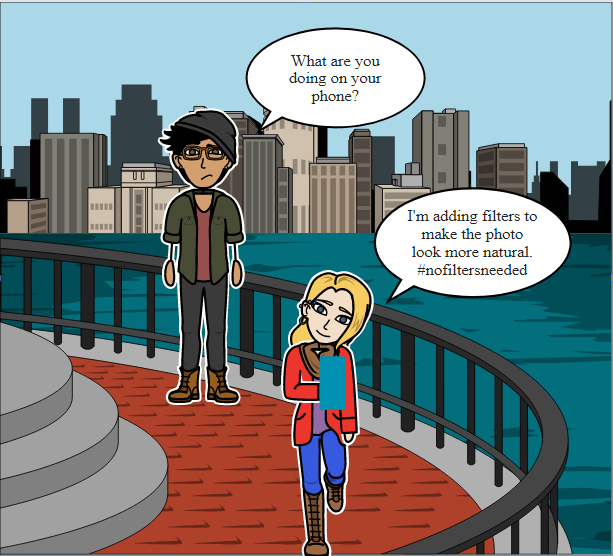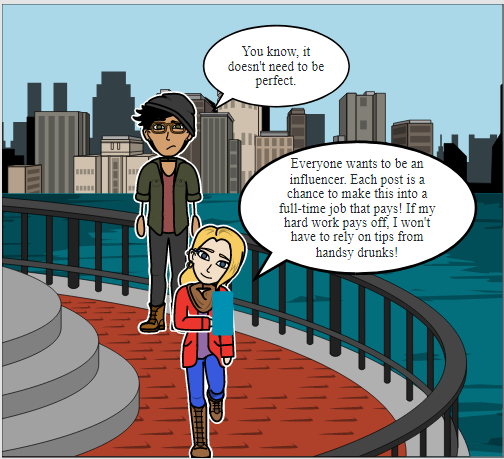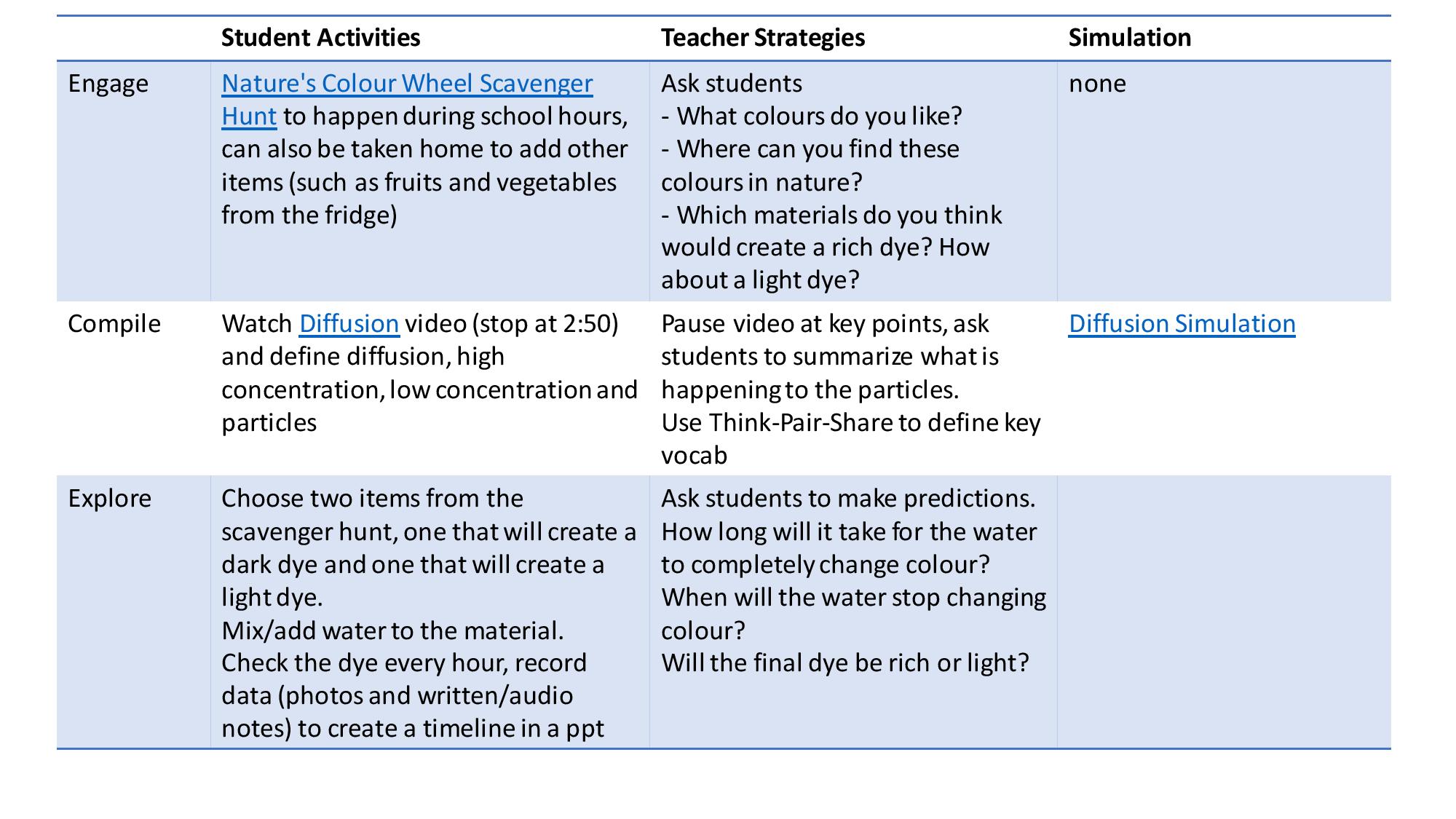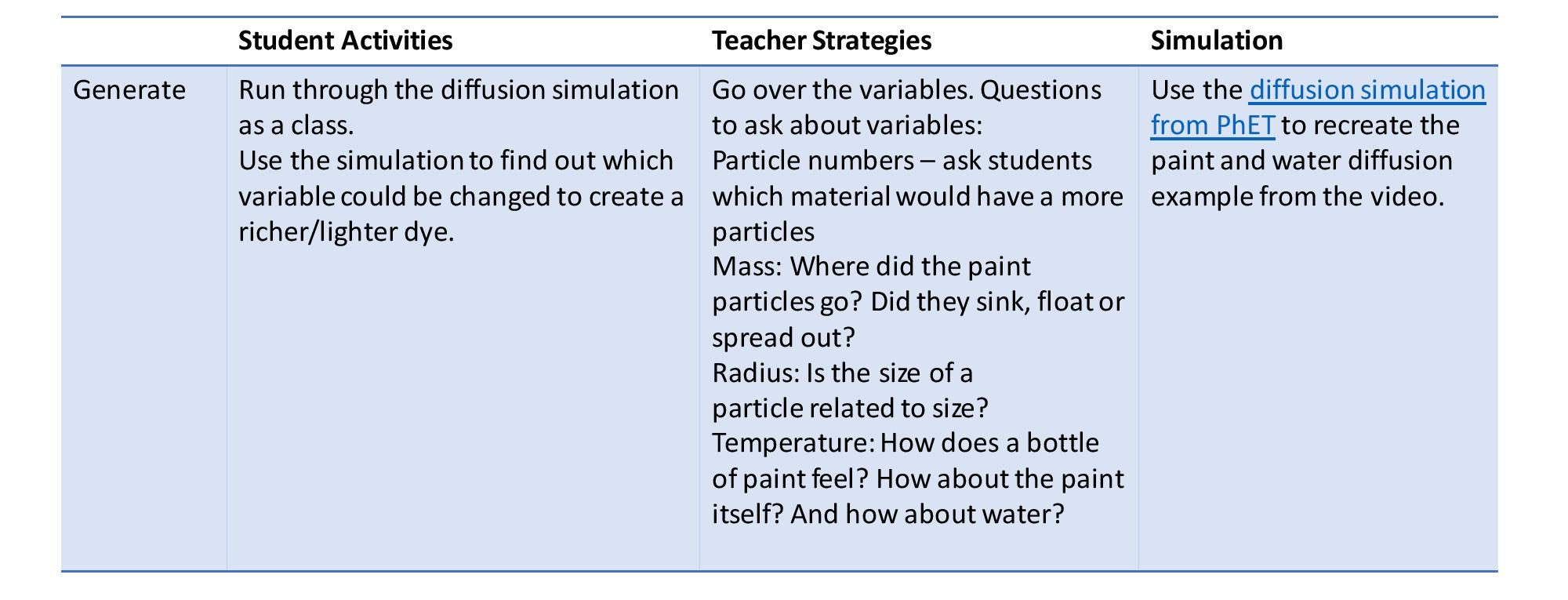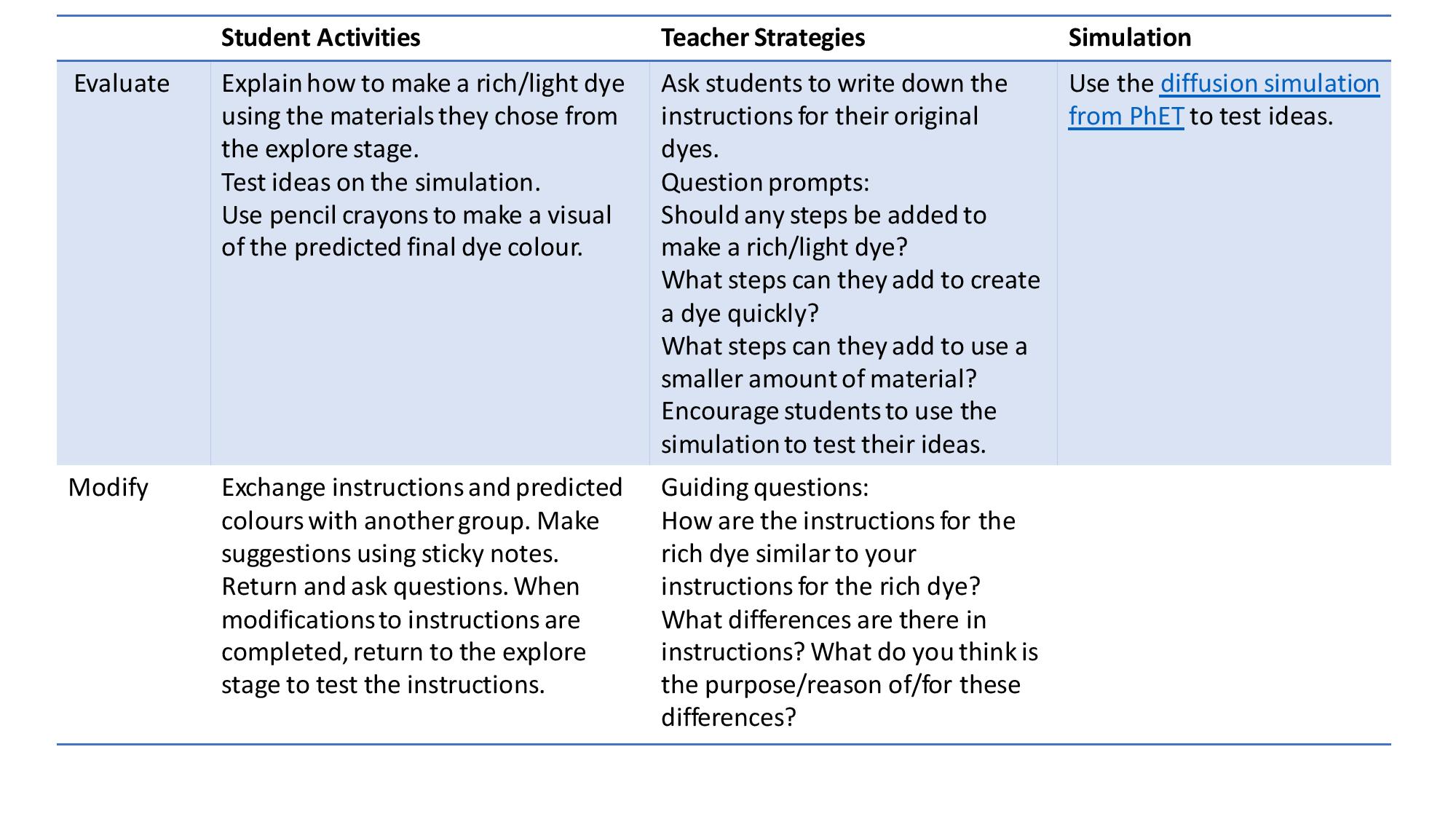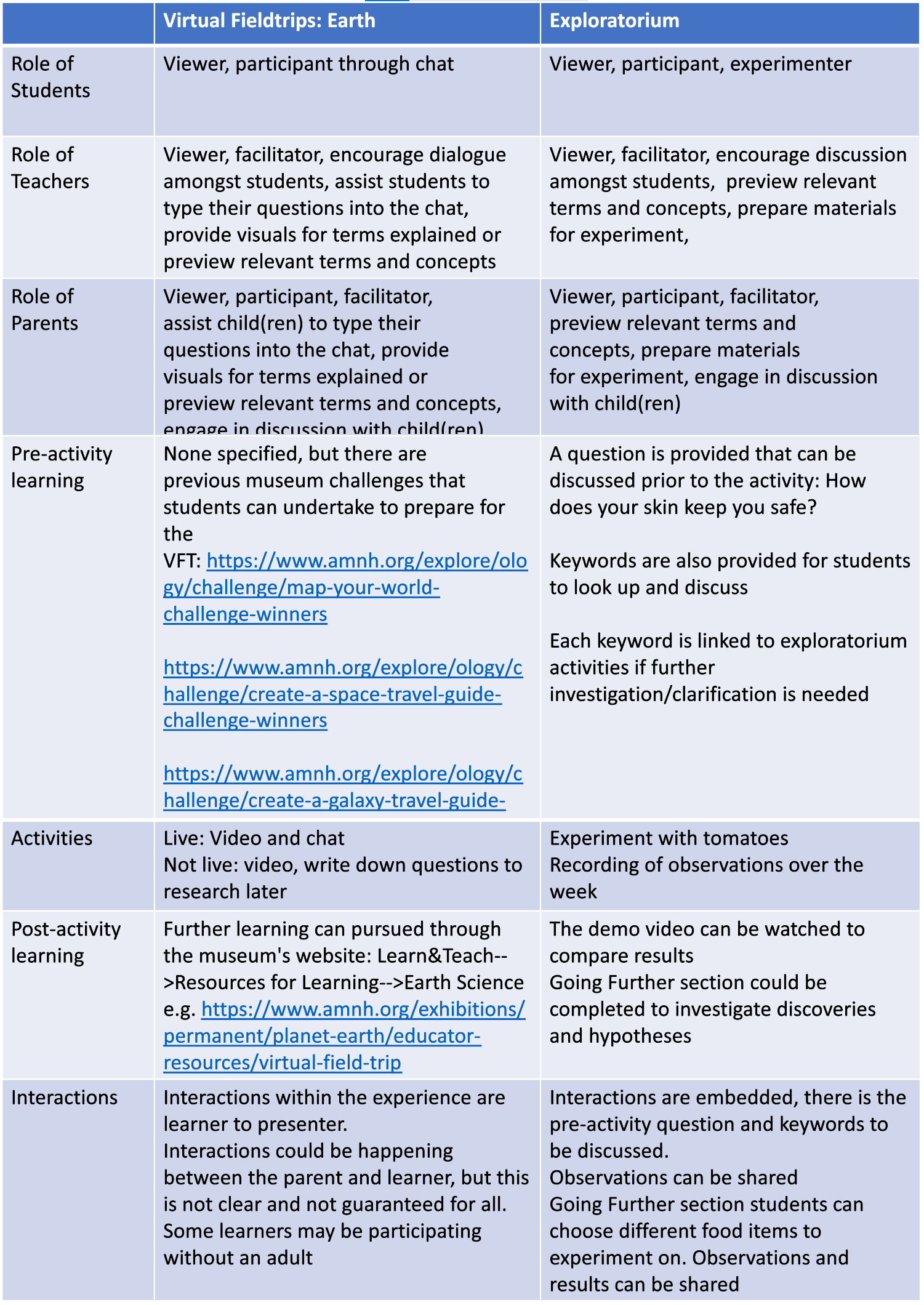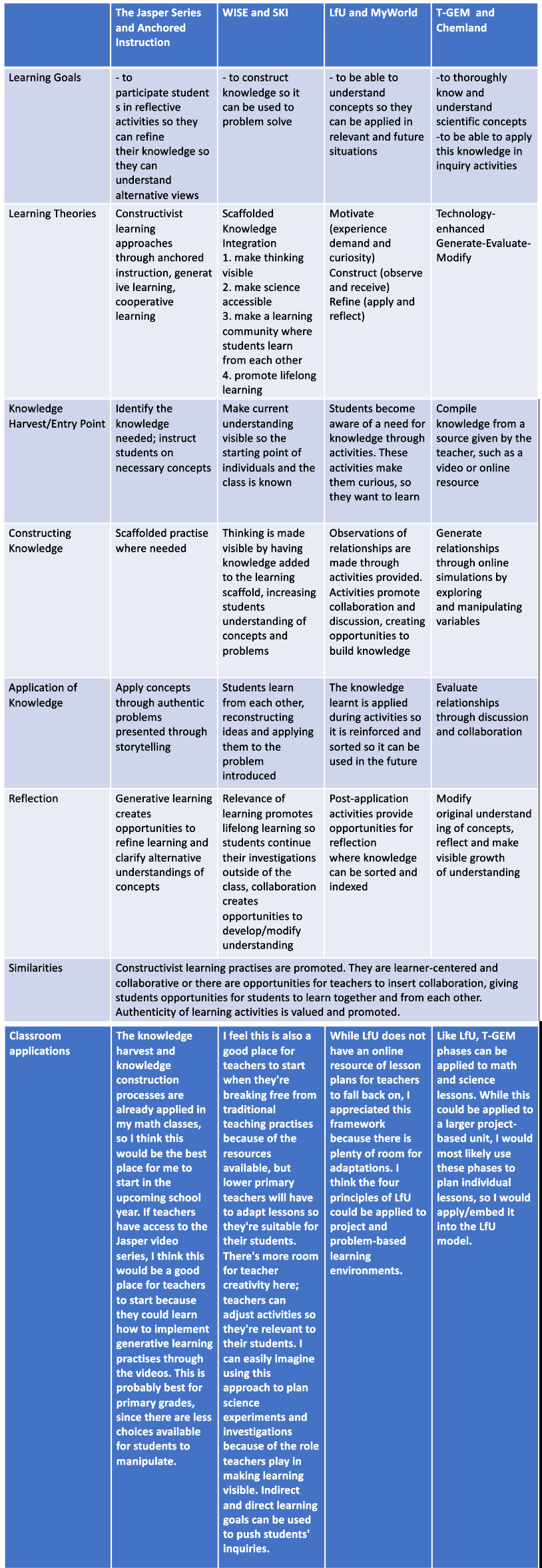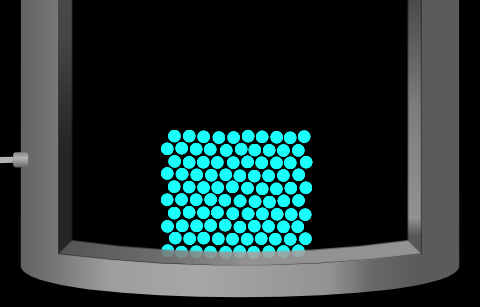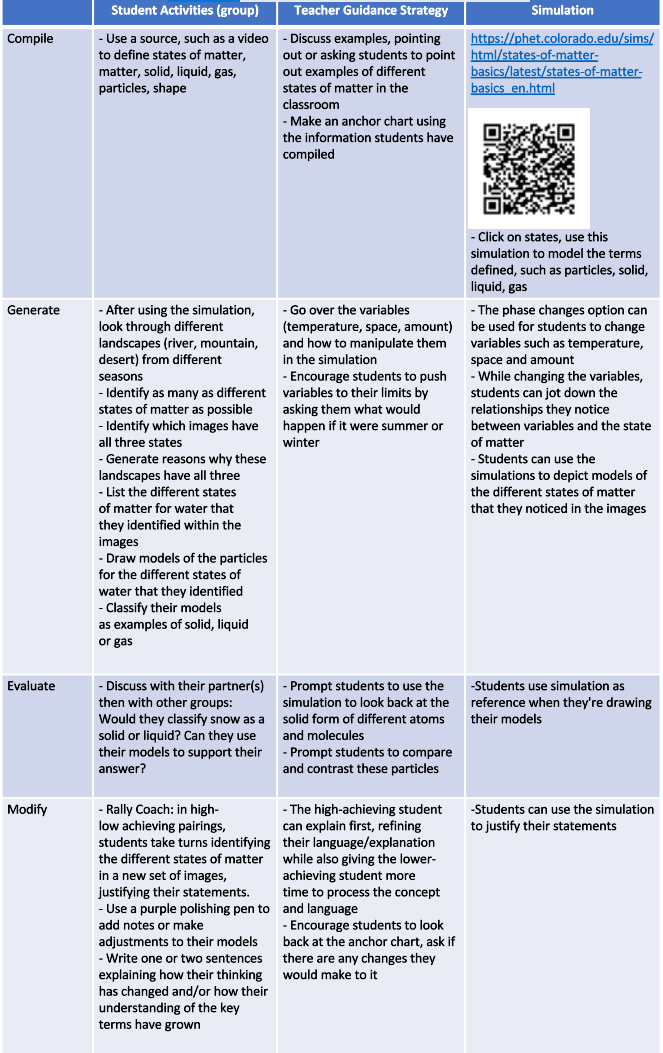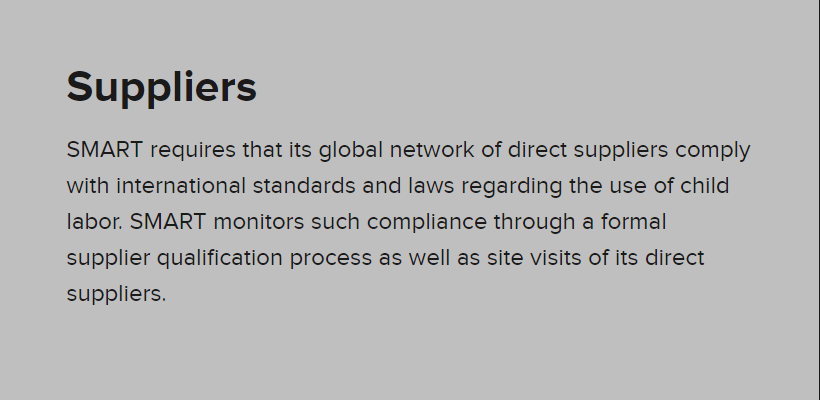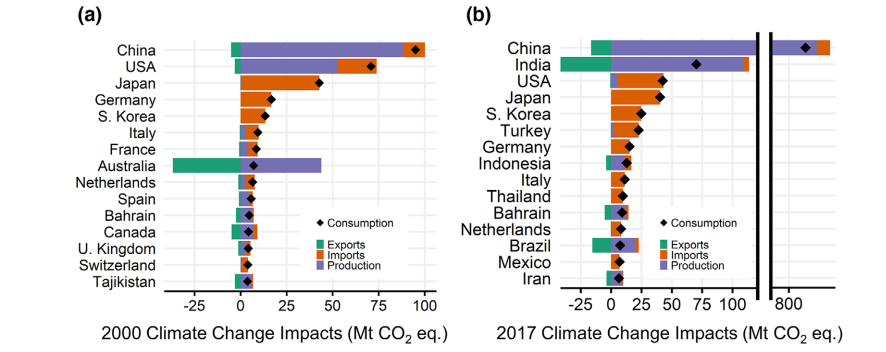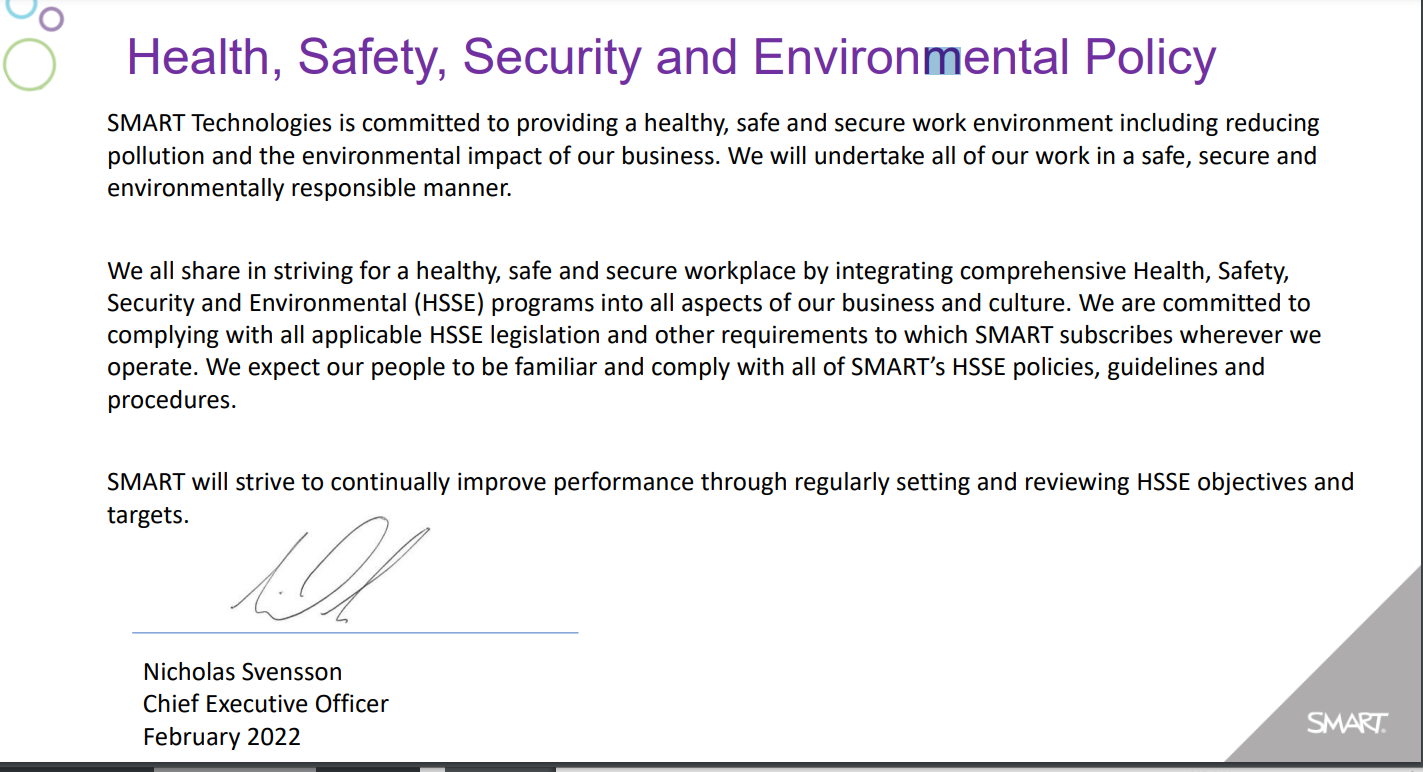Learning in artificial environments: Embodiment, embeddedness and dynamic adaptation
Winn (2003) created a conceptual framework for learning in artificial environments. This framework shifts from the constructivist approach that was prioritized in previous frameworks/approaches of module B to cognitive neuroscience. In this framework artificial environments are supported by computer simulations that create natural environments, such as VR technologies (Winn, 2003).
The three components of Winn’s (2003) framework are:
Embodiment: how our thought processes are externalized through the body, this connection between the cognitive and physical leads to learners making inferences from observations.
Embeddedness: how the environment influences the action (embodiment). The environment can do this by encouraging instinctive or learned tendencies or through planned affective and cognitive strategies. Affective strategies affect how much the learners believe they are actually in the environment. Learning happens by presenting knowledge that the learners could not predict or explain with their current understanding. The knowledge has to be tangible in that it is both understandable and believable. Learners have to actively find the knowledge so it can be used to solve current and future problems.
Adaptation: The learner and environment are seen as an evolving system instead of two separate interacting entities. In this system, learners’ understanding of concepts evolves which leads to changes in learners’ interactions with the environment and vice versa.
Some might argue that this could be putting students who do not enjoy physical activity or who feel awkward in their bodies at a disadvantage, but the limitations of our bodies “force students to deal with the world in ways ‘real’ scientists must—by making inferences from indirect, instrumented observations of phenomena” (Winn & Windscliitl, 2000, cited in Winn, 2003, p. 94). I can see this as a way to engage different parts of the brain, thus reinforcing the learning. I especially think this would be easy to adapt to the lower primary years because they already do this in a lot of activities. This would be good for the upper years as well; some learning/teaching practises are dropped as students progress through the school system because they are seen as juvenile or childish, but movement is important for all ages.
Ambient wood: designing new forms of digital augmentation for learning outdoors
Rogers et al. (2004) argue that e-learning has focused on making learning possible anywhere, but little focus has been placed on augmenting the process of learning. While students can observe the “here and now” of the outdoors, students can access relevant information through digital wireless technologies so they can zoom out and examine the processes behind what they observe.
The framework was created to support students’ outdoor exploration and it consists of four parts. 
Taken from Rogers, Y., Price, S, Fitzpatrick, F., Fleck, R., Smith, H., Randell, D., Muller, H., O’Malley, C., Stanton,D., Thompson, M., & Weal, M. (2004). Ambient Wood: Designing new forms of digital augmentation for learning outdoors. Proceedings of Interaction, Design and Children, Maryland, US, 3-11.
- Type: the purpose is to give students access to ecological processes and organisms that might not be visible during the day or to the naked eye
a) pre-recorded data (e.g. YouTube video)
b) live data that is probed (e.g. readings from Google Lens)
2. Mode: the interactions between the learners and the environment
a) student-initiated mode: students control their interactions through digital technology. For example, they decide the direction of their investigation by choosing what to scan and/or which digital tool to use.
b) environmentally-initiated mode: the environment decides when and what information to send to students. It can be a location triggered piece of information such as a sound clip for students to explore.
c) hybrid-initiated mode: a combination of student and environmentally initiated modes.
* All of these can be directed through a remote facilitator so students can express their findings and be prompted to take their explorations further.
3. Media: to encourage students to make connections between the media and the process it represents. They should not overwhelm students or overpower the environment. The types of media used by Rogers et al. (2004) are:
a) videoclips showing seasonal changes
b) images with voice-over descriptions
c) non-speech sounds such as the sound of a root growing
d) diagrams depicting different processes that occur in the woods
4. Devices: to present the media. Rogers et al. (2004) used store-bought and home-made devices such as PDAs, wireless speakers, a probe tool, a periscope, and an ambient horn.



Taken from Rogers, Y., Price, S, Fitzpatrick, F., Fleck, R., Smith, H., Randell, D., Muller, H., O’Malley, C., Stanton,D., Thompson, M., & Weal, M. (2004). Ambient Wood: Designing new forms of digital augmentation for learning outdoors. Proceedings of Interaction, Design and Children, Maryland, US, 3-11.
Of particular interest was the infrastructure built to trigger location-based information, and track the students’ positions as well as the information they collected. Rogers et al. (2004) explained how to build the infrastructure, but I know that I would need support from my school’s IT team. Perhaps the infrastructure wouldn’t be necessary if environmentally-initiated modes are not used. Rogers et al. (2004) found that student-initiated modes were best at creating opportunities for collaboration, reflection and hypothesizing.
From action to abstraction: Using the hands to learn math
I’ve used hand gestures in English class to reinforce punctuation and with EAL learners for different words, and I’ve seen many people teach their babies sign language so my interest was piqued when I saw this article title. While I was reading I couldn’t help but wonder whether verbal language was more or less abstract than gestures. Novack et al. (2014) rank the following from most abstract to least abstract:
- verbal language
- gesture
- action
and conclude that gesture’s placement in the middle has to do with its ability to promote learning in math. For gestures to be successful, Novack et al. (2014) state that they must
- gestures are not tied to objects, thus it makes it easier for learners to generalize the knowledge
- focus on procedural aspects that are conducive to problem solving
- should be scaffolded using action-based instruction
- the action-based instruction’s procedure is too specific, it will be difficult for learners to generalize and apply the action to other problems
Acting was used in the study, but it was not found to be effective. The age of learners and abstractness of the concepts have to be considered.
Questions:
- I think some forms of embodiment will be more easily accepted in different settings. For those of you who teach secondary or adult learners, would you use hand learning in your maths or science classes? How would you overcome any reluctance towards hand learning?
- I thought it was interesting that Rogers et al. (2004) used hand-made tools along with digital tools. Are there any hand-made tools that your students use alongside digital tools?
- I’m a big fan of Google Lens, but in China it requires a VPN. Any suggestions for a similar digital tool that doesn’t require a VPN?
- Outdoor learning has so many benefits because it is a tangible learning environment. Besides recording devices, can you share some digital tools your class used to explore their environment?
- I thought that the environmentally-initiated method described in Rogers et al. (2004) had potential to challenge students thinking and connecting-making processes but it sounds difficult to implement. What do you think of using AR? Are there other technologies that could be used?
References
Novack, M. A., Congdon, E. L., Hemani-Lopez, N., & Goldin-Meadow, S. (2014). From action to abstraction: Using the hands to learn math. Psychological Science, 25(4), 903-910. https://www.ncbi.nlm.nih.gov/pmc/articles/PMC3984351/
Rogers, Y., Price, S, Fitzpatrick, F., Fleck, R., Smith, H., Randell, D., Muller, H., O’Malley, C., Stanton,D., Thompson, M., & Weal, M. (2004). Ambient Wood: Designing new forms of digital augmentation for learning outdoors. Proceedings of Interaction, Design and Children, Maryland, US, 3-11.
Winn, W. (2003). Learning in artificial environments: Embodiment, embeddedness, and dynamic adaptation. Technology, Instruction, Cognition and Learning, 1(1), 87-114.


